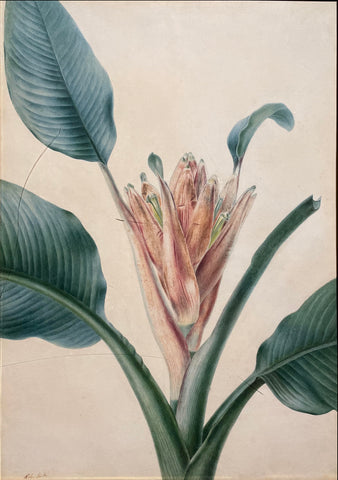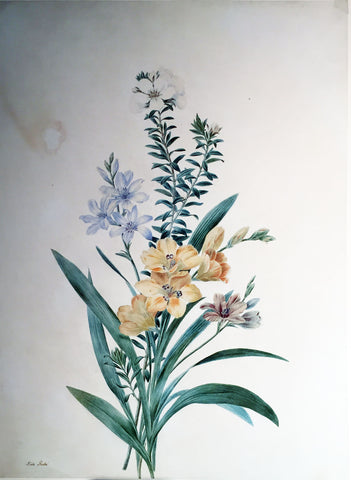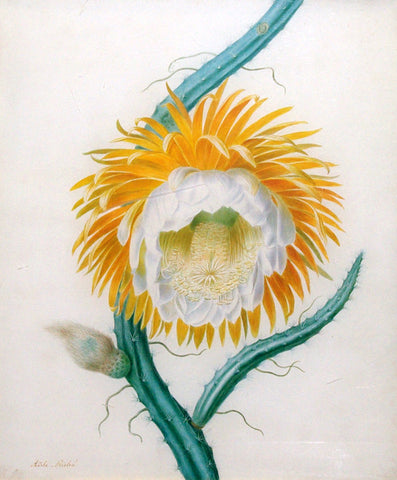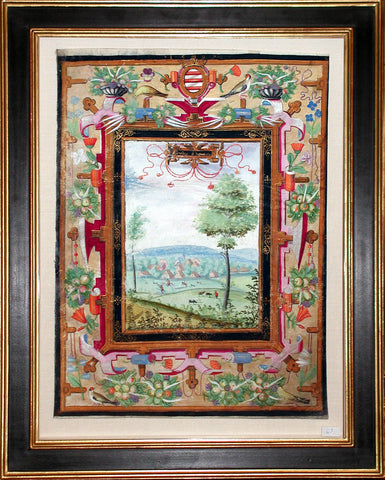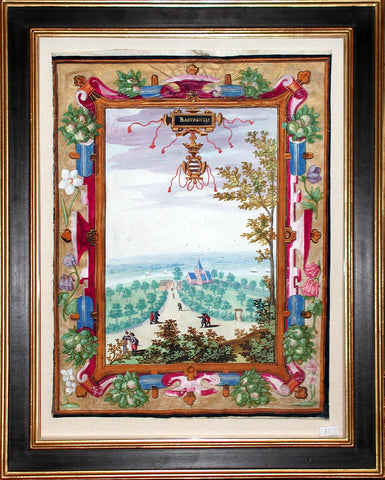Johannes Bronckhorst (Dutch, 1648-1727), Parrots [Unidentified species (left), Sun Conure or Sun Parrakeet (center), Rosy-faced Lovebird (right)]
Johannes Bronckhorst (Dutch, 1648-1727)
Parrots [Unidentified species (left), Sun Conure or Sun Parrakeet (center), Rosy-faced Lovebird (right)]
Watercolor and gouache on vellum
Signed I.e.: J. B. fee. lower right
Vellum size: 8 3/4 x 12 in.
Frame size: 14 x 17 1/2 in.
$38,000
The sun conure (Aratinga solstitialis), also known as the sun parakeet, is a medium-sized, vibrantly colored parrot native to northeastern South America. Its specific epithet, "solstitialis," comes from the Latin term meaning "of the summer solstice," which reflects its sunny golden plumage. The sun conure is the closest living relative of the extinct Carolina parakeet. As a result, its genes have been sequenced to facilitate comparative studies of the genome of the Carolina parakeet. The two species last shared a common ancestor around 3 million years ago, during the closure of the Isthmus of Panama, which permitted easier dispersal of species between North and South America.
The rosy-faced lovebird (Agapornis roseicollis), also known as the rosy-collared or peach-faced lovebird. This species inhabits dry, open country in southwest Africa. Its range extends from southwest Angola across most of Namibia to the lower Orange River valley in northwest South Africa. Lovebirds are renowned for their sleep position, in which they sit side-by-side and turn their faces towards each other.
The combination of South American and African species is interesting, leading one to consider why the artist chose to group them. This may speak to either the patron of the work,, who may have been a collector of exotic birds, or that the artist was painting from a particular cabinet of curiosity that grouped items by categories other than region.It is in the beautiful watercolors on the following pages that we see the full range of Bronckhorst's skill. He forges a remarkable synthesis between a concern for scientific truth and the decorative by incorporating exotic species that were highly prized by royal and private clients. In his arrangements, Bronckhorst places the animals within a setting that provides a guide to scale and an impression of the landscape of their natural habitats.
We Also Recommend

![Johannes Bronckhorst (Dutch, 1648-1727), Parrots [Unidentified species (left), Sun Conure or Sun Parrakeet (center), Rosy-faced Lovebird (right)]](http://aradergalleries.com/cdn/shop/products/Bronkhorst_-_Parrots_large.jpg?v=1517413015)
![Johannes Bronckhorst (Dutch, 1648-1727), Parrots [Unidentified species (left), Sun Conure or Sun Parrakeet (center), Rosy-faced Lovebird (right)]](http://aradergalleries.com/cdn/shop/products/Bronkhorst_-_Parrots_compact.jpg?v=1517413015)
![Johannes Bronckhorst (Dutch, 1648-1727), Parrots [Unidentified species (left), Sun Conure or Sun Parrakeet (center), Rosy-faced Lovebird (right)]](http://aradergalleries.com/cdn/shop/products/Bronkhorst_-_Parrots_b9038f27-05dc-42e5-89f1-8e143b447870_compact.jpg?v=1517507386)
